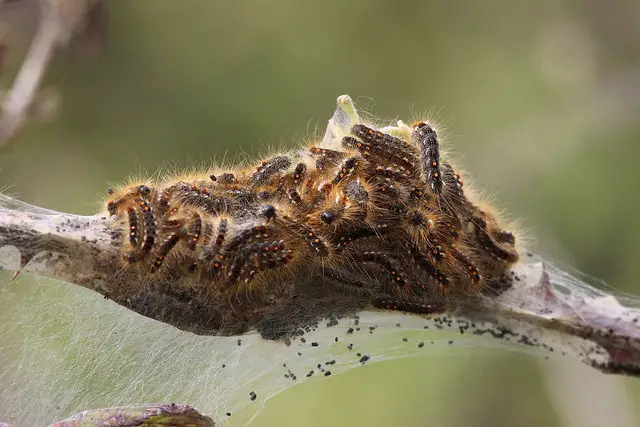The council share this latest news. Ed
Sightings of Brown-tail moth caterpillars at Ventnor have been reported to the council.
Following the reports, the council has treated public sites such as the paddling pool in Ventnor to remove the creatures, whose hairs can break off as barbs, causing skin irritation and breathing difficulties.
Managing the annual influx
Lee Matthews, recreation and public spaces manager at Isle of Wight Council, said,
“We are liaising with Ventnor Town Council to manage the annual influx of this particular young insect. I would remind the public that the hairs on brown-tail moth caterpillars can cause skin and eye irritation, particularly in children, so it is important to avoid handling them.
“If you are unfortunate enough to be affected, you can expect a rash together with irritation similar to a severe nettle rash. Because the hairs can become airborne some people may experience symptoms affecting their eyes and breathing similar to hay fever.”
Normally this will give a few hours of localised discomfort. Washing the affected area with water and the application of calamine lotion on the skin may ease the itching. The hairs may also worsen symptoms of asthma for some people.
You should seek medical advice from your pharmacist or GP if symptoms do not settle down within a few hours.
Spring activity
The caterpillars become active in the spring. During March, caterpillars can be found in their winter tents. By April the caterpillars begin to emerge en masse from their tents and start to feed.
They gradually move further away from their winter tents during May until they become solitary. The creatures spin a cocoon and pupate, with adult moths emerging in July/August, ready to mate.
Females lay eggs near the tip of shrub branches and then they spin a tent at the end of the shoots in readiness for winter.
FACT FILE
Although the caterpillars prefer hawthorn and blackberry, they will eat leaves from any type of bush.
The creatures are between 7mm and 38mm in length (depending on age), dark brown in colour with a distinctive white line down each side; with the whole body covered in tufts of brown hairs and two distinct orange/red dots are noticeable on the caterpillars back towards the tail.
The insects have spiked and barbed hairs, which can penetrate skin, causing an irritant reaction.
Image: Chris Cooper under CC BY 2.0





